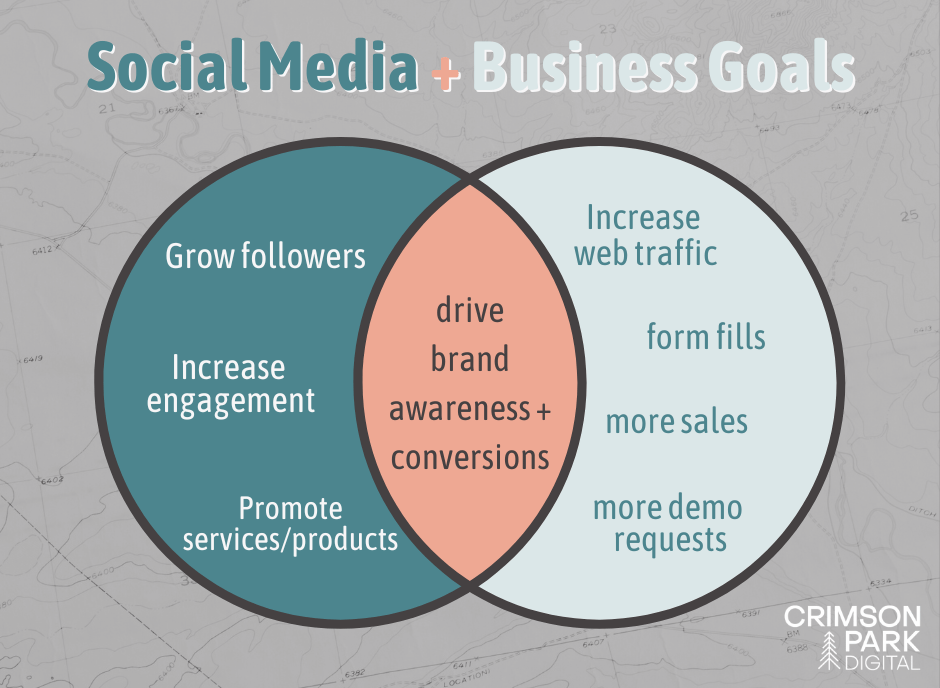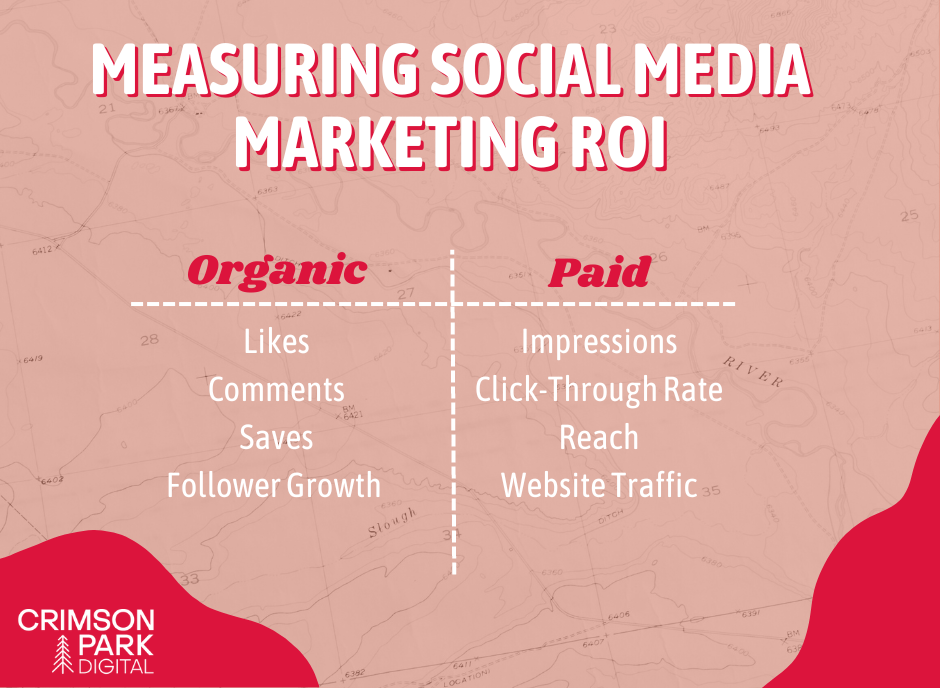Unlocking Startup Success: How to Align Social Media Goals with Business Objectives
1 in 3 marketers assert that social media has become a crucial component of their business growth strategy. With 3.6 billion users worldwide now engaging with social media platforms, it’s an irresistible opportunity to reach potential clients and boost brand awareness.
Anyone launching a startup knows the crucial role social media plays in achieving business objectives. Yet, the million-dollar question remains:
How do you perfectly align these two?
Smart strategies to align your startup’s objectives with your social media goals don’t require hefty budgets–just a dash of creativity and an understanding of your unique position in the market. Navigate this tricky terrain, and you’ll unlock a vault filled with startup success.
Step-by-Step Guide to Aligning Your Startup’s Social Media Goals with Business Objectives
Learn how to grasp your business objectives and identify key performance indicators (KPIs). Develop precise social media goals that align with your business objectives, then form a comprehensive social media strategy that matches your set goals.
Step 1: Understand Your Business Objectives
Understanding your business objectives is the first step to aligning your social media and business goals. These objectives, whether they involve boosting customer satisfaction or expanding your customer base, lay the foundation for your social media strategy. Be aware of your Key Performance Indicators (KPIs)—the measurable values that illustrate your company’s effectiveness in achieving its objectives. They don’t only provide insight into your company’s performance but also assist in shaping your social media goals.
For example, if your startup’s business objective is to increase sales by 20% over the next quarter, your KPI might be the number of new leads your marketing team generates every month. The clearer your business objectives and KPIs are, the easier it will be to align your social media strategy with them.
Step 2: Define Your Social Media Goals
Once you understand your business objectives, defining your social media goals becomes your next priority. These goals need to be SMART – Specific, Measurable, Achievable, Relevant, and Time-based.
For instance, instead of aiming to “increase brand awareness,” consider a more specific goal, such as “increase the number of Facebook followers by 10% in two months.” This goal is not just clear but is also measurable, achievable, relevant to your business objectives, and time-bound.
Ensure that these goals align with your business objectives and cater to the needs and preferences of your varied online audience. If your business objective is to increase sales, your social media goal could involve driving more traffic to your website or promoting detailed product content that would convince potential leads.
Step 3: Create a Social Media Strategy
Creating a dynamic social media strategy is crucial to attaining your business objectives and social media goals.
Your strategy should include choosing the right social media platforms, deciding on the type of content to share, and creating a posting schedule, among other elements. Additionally, you should consider opportunities for both organic and paid social media marketing.
For example, if your goal is to boost engagement on Instagram, your strategy might focus on posting visually appealing images, using popular hashtags, and responding quickly to comments. If LinkedIn is your chosen platform and your goal is to reach more professionals in your industry, you may decide to share more informative, industry-specific articles and engage with other businesses within your niche.
Using social media management tools can also help you implement your strategy more effectively. These tools can assist you in scheduling posts, tracking engagement, and assessing the effectiveness of your efforts.
Implementing Your Social Media Strategy for Maximum Impact
From raising brand awareness to driving website traffic, social media can be a powerful weapon in your startup’s arsenal. However, turning your social media goals into measurable business results takes a strategic approach.
Choosing the Right Social Media Platforms
1 in 3 internet users say social media influences their purchases. However, to capitalize on social media’s commercial potential, you must choose the right platforms based on your target audience characteristics.
Different social media platforms attract different demographics. Instagram, for example, is popular with younger generations, while professionals and B2B decision-makers frequent LinkedIn. Use demographic data to identify which platforms your target audience uses and prioritize those in your social media strategy.
Don’t limit your thinking to the big players. Emerging platforms like TikTok or sector-specific networks might offer untapped potential for reaching niche audiences. Stay informed about new developments in social media to keep your strategy flexible and responsive.
Creating Engaging Content
Digital platforms are saturated with promotional content. To cut through the noise, your content must be engaging – offering value, entertainment, or both.
Creating engaging content starts with understanding your audience. What challenges do they face? What inspires them? Use this knowledge to create content that resonates. For example, a B2B tech startup could share thought leadership articles on LinkedIn, while a fashion brand could post style inspiration on Instagram.
User-generated content (UGC) offers a multitude of benefits, from authentic engagement to the potential for viral success. Encourage your audience to create and share content related to your brand. This will not only foster a sense of community but also supply a steady stream of real-life testimonials.
Remember, the most engaging content doesn’t just sell a product; it tells a story. A compelling narrative can humanize your brand, foster customer loyalty, and ultimately drive your bottom line.
Measuring Your Social Media Success
Adopting social media strategies takes us halfway through the journey. The baton is then passed on to measurement tools like KPIs to track the success rate. Here’s how to embrace the unfailing truth of numbers and use them as a yardstick for your startup’s social media prowess.
Tracking Key Performance Indicators (KPIs)
KPIs help us make sense of all the data we collect. They simply ratify your efforts by putting the outcomes into figures, percentages, and other measurable units.
The essence of social media KPIs becomes eminent in startups, where each post, like, share, comment, and click matters. Decoding what these metrics stand for, and implementing them in your business model, helps understand trends, consumer preferences, and assess overall performance.
Remember, not all KPIs might apply to your business. Choose those that resonate with your social media goals.
Each social media platform reels under different KPIs that realistically demonstrate how users are interacting with your content. Here are some of them:
- Follower Count: Shows how many individuals follow your account
- Engagement Rate: Manifests how people react to your posts
- Impressions: Depict the number of times your content is viewed
- Click-Through Rate (CTR): Signifies how often users click on the shared link
Each of these KPIs offers unique insights into influencing your social media strategy.
Adjusting Your Strategy Based on Performance
The power of analytics lies in the realization that there’s always room for improvement. There’s no concept of ‘arriving’ or ‘perfection’ – only ‘progress.’ A mindful assessment of your KPIs will reveal the gaps that need to be filled and the practices that can be continuously improved.
Go through the data laid out by your KPIs and question it. Did the engagement rate plummet last week? Or maybe the followers count saw a sudden spike? Delve into reasons such as the significance of the content posted during that period, frequency of posts, time of posting, and so on.
Change is revolutionary, and in the case of social media strategies, it can be quite rewarding. Every number that your KPIs reveal translates into an actionable. A low CTR might imply revising your content or enhancing the visibility of the shared links. Conversely, a high engagement rate might endorse posting related content more often.
No social media strategy can be fixed in stone. It’s all about observing, learning, failing, and iterating until you strike the chord that resonates with your audience and aligns with your business objectives. It’s a continuous process of evolution paved by analytics.
Partner With Us For Startup Success
The perfect alignment of business objectives with social media goals leads to startup success. This connection sparks engaging conversations, builds loyal customers, and drives profitable action. Our agency is familiar with startup realities and goals and applies social media strategies based on what will have the most impact.
Your startup’s voice matters in the bustling world of social media. Let us amplify its mission on the social media channels that your audience is spending time on.
Set up a consultation today to learn more about how we can grow your social presence.
Frequently Asked Questions
How do you align marketing goals with business goals?
Aligning marketing goals with business goals involves identifying key objectives such as revenue growth, brand awareness, customer acquisition, or retention. By understanding overarching business objectives, marketing strategies can be tailored to support these goals. This requires continuous communication and collaboration between marketing and other departments to ensure that marketing efforts directly contribute to achieving the broader business objectives. Regular assessment and adjustment of marketing tactics based on business performance metrics are also crucial for alignment.
What are social media goals and objectives?
Social media goals and objectives are targets set to achieve specific outcomes on social platforms. Goals typically include increasing brand awareness, driving website traffic, boosting engagement, generating leads, and fostering customer loyalty. Objectives outline measurable actions to achieve these goals, such as posting frequency, content types, and audience engagement strategies.
How do you ensure your approach to content and social strategy aligns with business goals and resonates with target audiences?
To ensure alignment with business goals and audience resonance, conduct thorough research to understand both objectives and audience preferences. Develop content that directly addresses these findings, utilizing analytics to measure performance and make adjustments accordingly. Regular collaboration between content creators and stakeholders ensures consistency and effectiveness in achieving business objectives.


